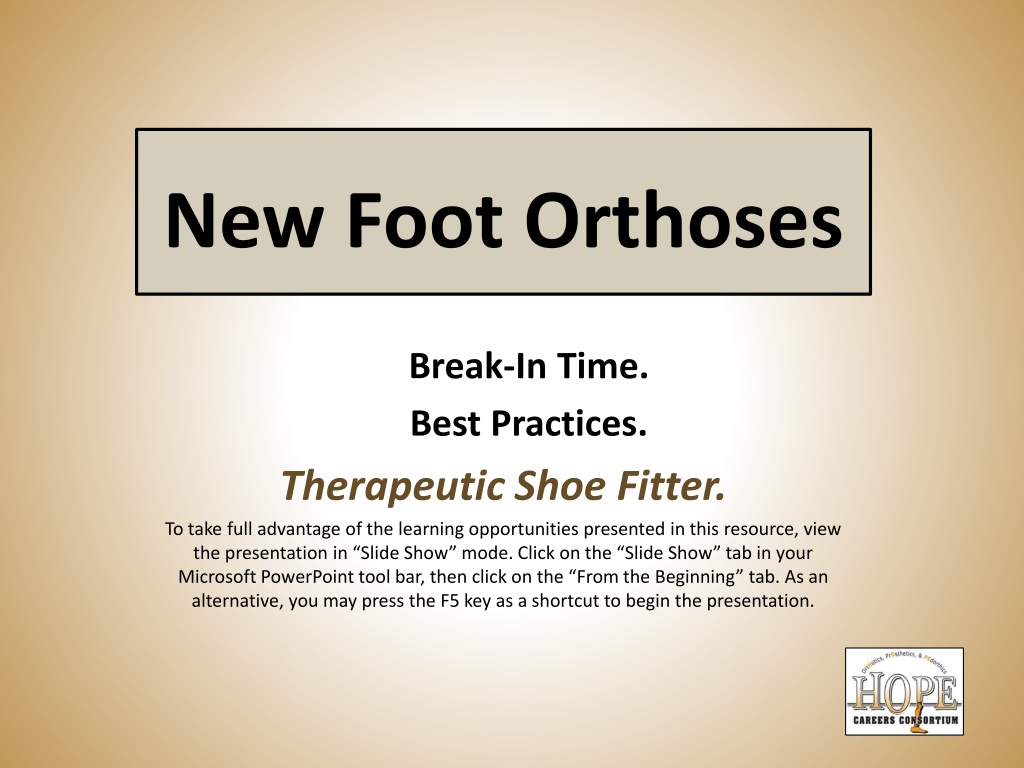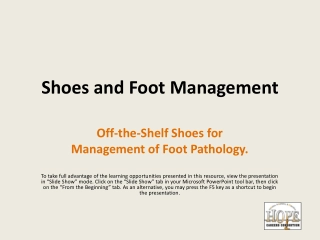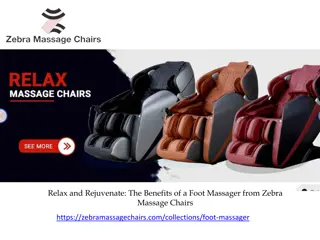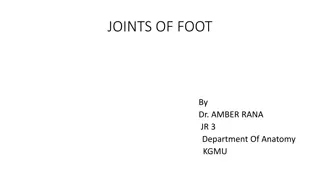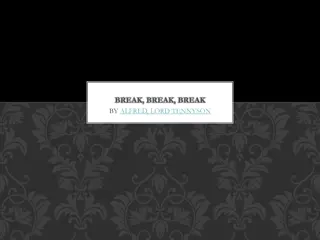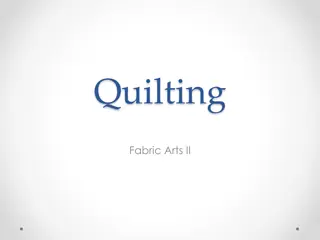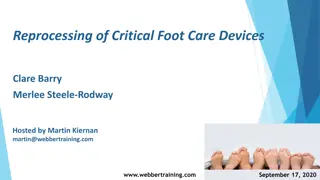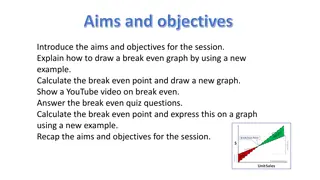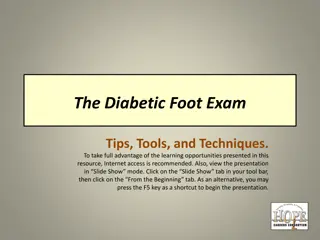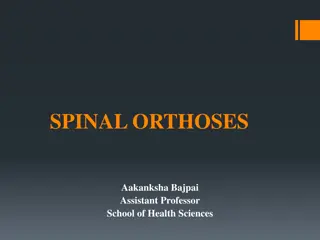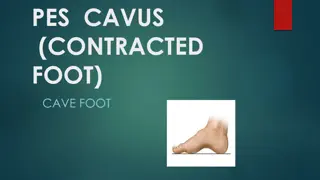New Foot Orthoses Break-In Best Practices for Optimal Function
Properly prescribed new foot orthoses can improve foot function, leading to changes in foot muscles, leg position, and overall comfort. To ensure a smooth transition, it is important to follow a gradual break-in process, wearing the orthoses for increasing durations each day and monitoring for any signs of irritation. These best practices help avoid discomfort and allow the feet to adjust effectively to the orthotic support.
Download Presentation

Please find below an Image/Link to download the presentation.
The content on the website is provided AS IS for your information and personal use only. It may not be sold, licensed, or shared on other websites without obtaining consent from the author. Download presentation by click this link. If you encounter any issues during the download, it is possible that the publisher has removed the file from their server.
E N D
Presentation Transcript
New Foot Orthoses Break-In Time. Best Practices. Therapeutic Shoe Fitter. To take full advantage of the learning opportunities presented in this resource, view the presentation in Slide Show mode. Click on the Slide Show tab in your Microsoft PowerPoint tool bar, then click on the From the Beginning tab. As an alternative, you may press the F5 key as a shortcut to begin the presentation.
New Foot Orthoses: FUNCTION When properly prescribed, new foot orthoses will improve the function of your feet. With improved function, come changes. What Changes? Muscles in your foot. Muscles connecting your foot to your leg. Leg position.
New Foot Orthoses: ADVICE Because of the changes, break in your new orthoses GRADUALLY Otherwise, you may experience foot, leg, knee, or hip pain.
New Foot Orthoses: BEST PRACTICE WEAR YOUR ORTHOSES: ONE HOUR = FIRST DAY TWO HOURS = SECOND DAY THREE HOURS = THIRD DAY ETC. EIGHTH DAY = FULL TIME (May take longer)
New Foot Orthoses: BEST PRACTICE AFTER EACH DAY: Remove your socks and inspect your feet for signs of irritation. If you see any redness, note how long it takes to go away.
New Foot Orthoses: BEST PRACTICE DURING BREAK-IN TIME: Wear in only ONE pair of shoes. If you feel a hotness, take out the orthoses blisters may form. Always wear socks.
New Foot Orthoses: BEST PRACTICE DO NOT: Wear while running until after the FIRST WEEK.
New Foot Orthoses: BEST PRACTICE AFTER ONE WEEK Wear as much as possible for the next TWO WEEKS.
New Foot Orthoses: BEST PRACTICE AFTER THREE WEEKS Have re-evaluated. Make necessary adjustments.
New Foot Orthoses QUESTIONS?
New Foot Orthoses This workforce product was funded by a grant awarded by the U.S. Department of Labor s Employment and Training Administration. The product was created by the grantee and does not necessarily reflect the official position of the U.S. Department of Labor. The U.S. Department of Labor makes no guarantees, warranties, or assurances of any kind, express or implied, with respect to such information, including any information on linked sites and including, but not limited to, accuracy of the information or its completeness, timeliness, usefulness, adequacy, continued availability, or ownership. Produced 2015. HOPE Careers Consortium is a partnership of five institutions of higher education that is building exciting new programs that will provide valuable career education and training in the Orthotics, Prosthetics, and Pedorthics (O&P) sector. The five institutions are: Baker College Flint, Michigan; Century College White Bear Lake, Minnesota; Oklahoma State University Institute of Technology Okmulgee, Oklahoma; Spokane Falls Community College Spokane, Washington; and St. Petersburg College St. Petersburg, Florida. Although the authoring institution of this educational resource has made every effort to ensure that the information presented is correct, the institution assumes no liability to any party for any loss, damage, or disruption caused by errors or omissions. Except where otherwise noted (images from Pixabay.com), this work by Oklahoma State University Institute of Technology (OSUIT) is licensed under the Creative Commons Attribution 4.0 International License. To view a copy of this license, click on the following link: Creative Commons Licenses 4.0.
